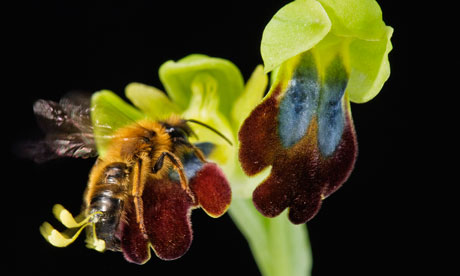 |
| Horse chestnut leaves infested with Cameraria ohridella lavae. |
If you live in Southern England, for an example of very recent evolution you probably only need walk to your nearest horse chestnut tree. I took this photograph near Sunningwell, Oxfordshire earlier on Saturday when we went out for a last distant look at Didcot Power Station, which is probably England's best-loved 'eyesore' but which is due to disappear in a cloud of dust in a few hours time. The chances are that by now your nearest horse chestnut tree will be becoming infested with the leaf-miner caterpillars of a moth which was unknown before 1985 when the first outbreak was recorded in Macedonia, Greece.
Since then,
Cameraria ohridella has spread at an average of 60 Km per year across western Europe reaching England in 2002, where it is now widespread, causing the leaves of horse chestnut trees (
Aesculus hippocastanum) to turn brown, wither and fall off by late summer. Devastating though this attack appears, the general health of the trees seems not to be unduly affected since they come back into leaf and grown normally the following spring.
Although this moth was a newly-discovered species in 1985, specimens of it were accidentally collected and pressed in botanical specimens as early as 1879 only to be rediscovered when a team of researchers carried out a systematic search of specimens stored in herbaria.
Abstract
Determining the native geographic range or origin of alien invasive species is crucial to developing invasive species management strategies.





















